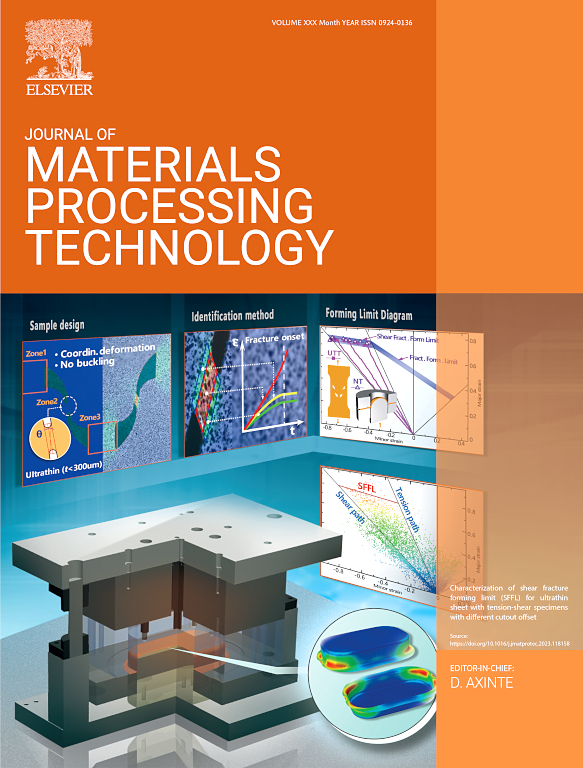Nanosecond pulsed laser removal of passivation film on electrochemically machined Ti-6.5Al-2Zr-1Mo-1V alloy: Mechanism analysis, surface characterization and experimental verification
IF 7.5
2区 材料科学
Q1 ENGINEERING, INDUSTRIAL
Journal of Materials Processing Technology
Pub Date : 2025-07-01
DOI:10.1016/j.jmatprotec.2025.118954
引用次数: 0
Abstract
The passivation film on the surface of electrochemically machined titanium alloy has a significant and critical influence on the subsequent processing efficiency and surface quality. In this paper, the effect and mechanism of laser on the passivation film of electrochemically machined Ti-6.5Al-2Zr-1Mo-1V (TA15) alloy were investigated, and comprehensively evaluated the removal effect passivation film by studying the laser energy threshold, single pulse ablation and solidification, plasma behavior and the effect of laser on the substrate surface. And the removal of the passivation film was further verified through comparative experiments of counter rotating electrochemical machining (CRECM). The results showed the passivation film of the titanium alloy after electrolysis can be removed by laser, with a surface oxygen content of 1.08 %. And the laser energy can eliminate the segregation of α and β phases on the surface caused by electrochemical machining (ECM) titanium alloy through the synergistic effect of thermal ablation and force impact. Compared with the surface roughness of TA15 titanium alloy processed by CRECM without laser removal of the passivation film (Ra=102.02 μm), the surface quality of the processed titanium alloy after laser removal of the passivation layer was significantly improved, and the Ra value reaches 2.494 μm.
纳秒脉冲激光去除电化学加工Ti-6.5Al-2Zr-1Mo-1V合金钝化膜:机理分析、表面表征及实验验证
电化学加工钛合金表面的钝化膜对后续的加工效率和表面质量有着重要而关键的影响。本文研究了激光对电化学加工Ti-6.5Al-2Zr-1Mo-1V (TA15)合金钝化膜的影响及其机理,并通过对激光能量阈值、单脉冲烧蚀与凝固、等离子体行为以及激光对基体表面的影响等方面的研究,综合评价了钝化膜的去除效果。并通过反向旋转电化学加工(CRECM)对比实验进一步验证了钝化膜的去除效果。结果表明,激光可去除电解后的钛合金钝化膜,表面氧含量为1.08 %。激光能量可以通过热烧蚀和力冲击的协同作用消除电化学加工(ECM)钛合金表面产生的α、β相偏析。与未激光去除钝化膜的CRECM加工TA15钛合金的表面粗糙度(Ra=102.02 μm)相比,激光去除钝化层后加工的钛合金表面质量得到了显著提高,Ra值达到2.494 μm。
本文章由计算机程序翻译,如有差异,请以英文原文为准。
求助全文
约1分钟内获得全文
求助全文
来源期刊

Journal of Materials Processing Technology
工程技术-材料科学:综合
CiteScore
12.60
自引率
4.80%
发文量
403
审稿时长
29 days
期刊介绍:
The Journal of Materials Processing Technology covers the processing techniques used in manufacturing components from metals and other materials. The journal aims to publish full research papers of original, significant and rigorous work and so to contribute to increased production efficiency and improved component performance.
Areas of interest to the journal include:
• Casting, forming and machining
• Additive processing and joining technologies
• The evolution of material properties under the specific conditions met in manufacturing processes
• Surface engineering when it relates specifically to a manufacturing process
• Design and behavior of equipment and tools.
 求助内容:
求助内容: 应助结果提醒方式:
应助结果提醒方式:


